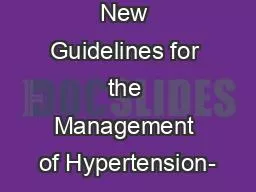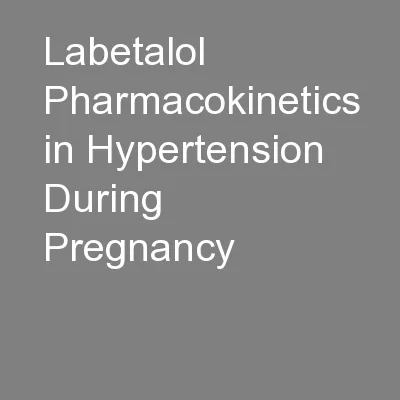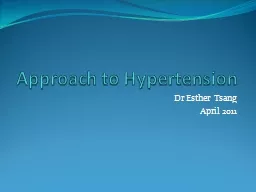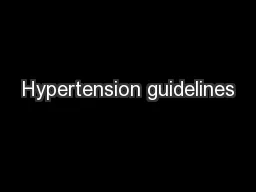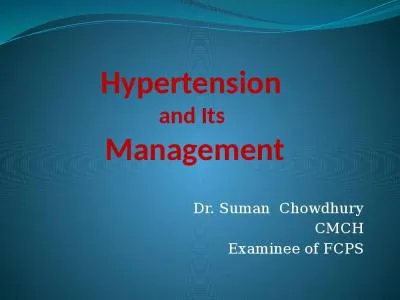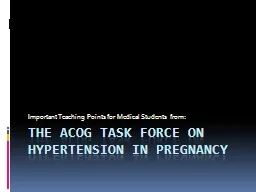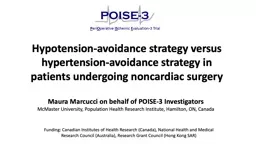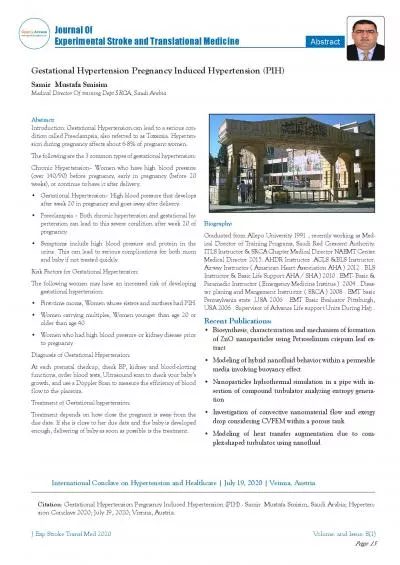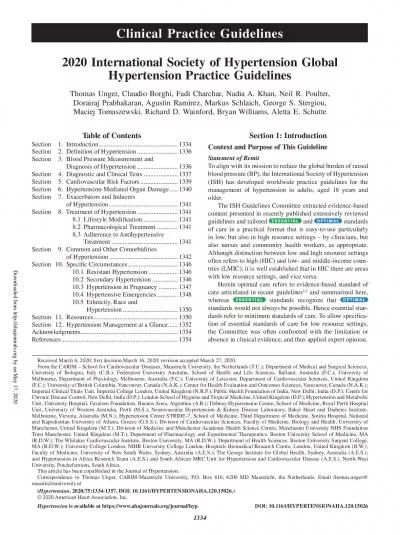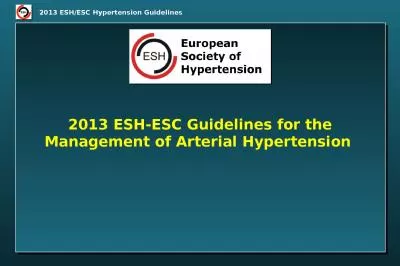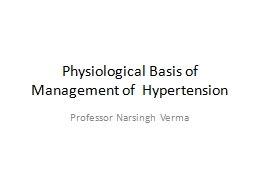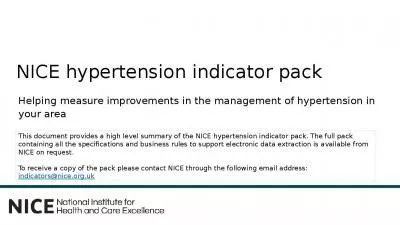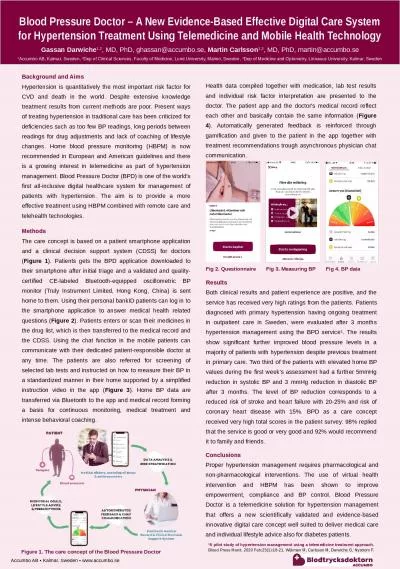PPT-New Guidelines for the Management of Hypertension-
Author : magdactio | Published Date : 2020-08-27
Is the Pressure Off Pranay Kathuria MD FACP FASN FNKF Director Division of Nephrology Director Nephrology Fellowship Professor of Medicine University of Oklahoma
Presentation Embed Code
Download Presentation
Download Presentation The PPT/PDF document "New Guidelines for the Management of Hyp..." is the property of its rightful owner. Permission is granted to download and print the materials on this website for personal, non-commercial use only, and to display it on your personal computer provided you do not modify the materials and that you retain all copyright notices contained in the materials. By downloading content from our website, you accept the terms of this agreement.
New Guidelines for the Management of Hypertension-: Transcript
Download Rules Of Document
"New Guidelines for the Management of Hypertension-"The content belongs to its owner. You may download and print it for personal use, without modification, and keep all copyright notices. By downloading, you agree to these terms.
Related Documents

